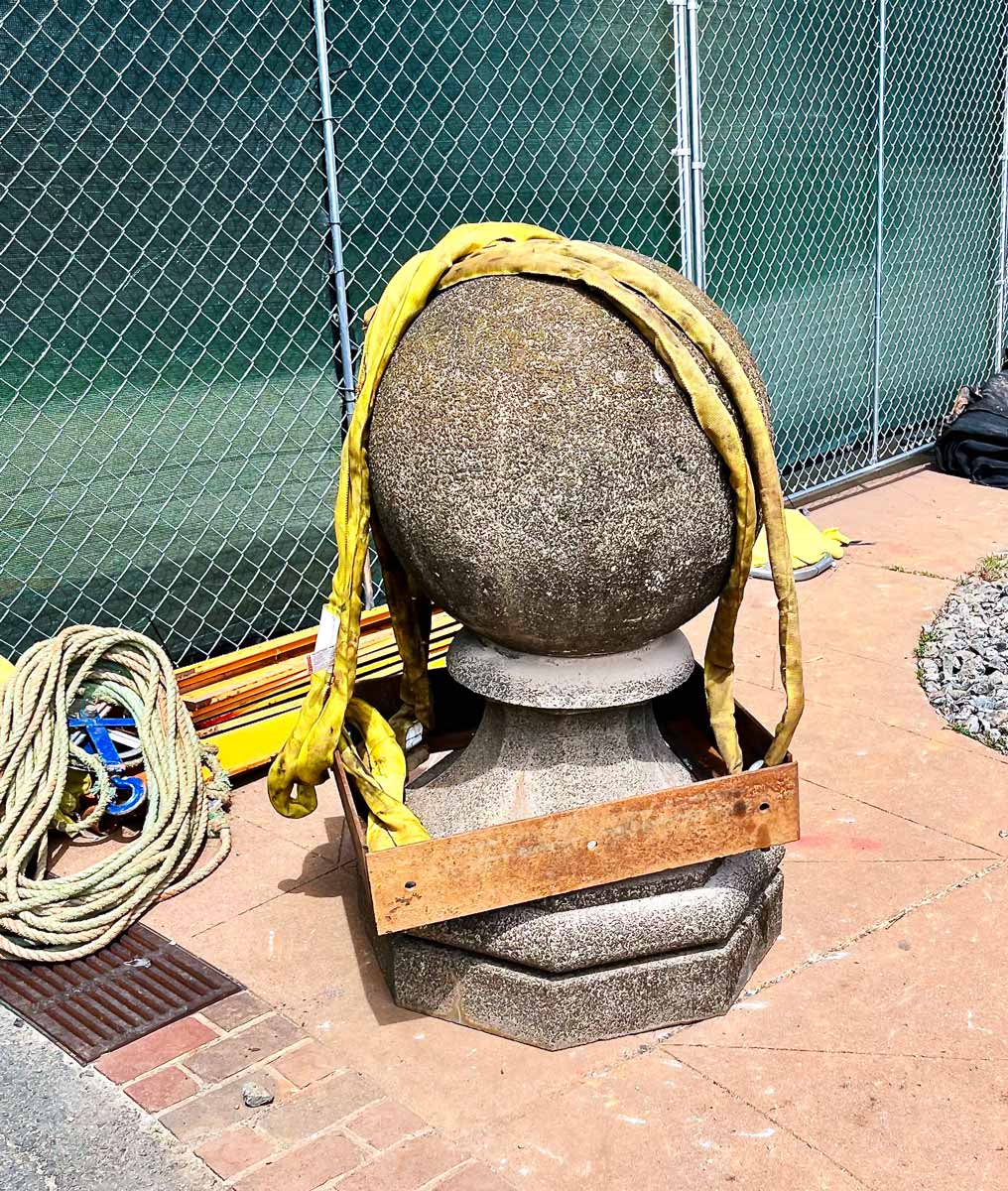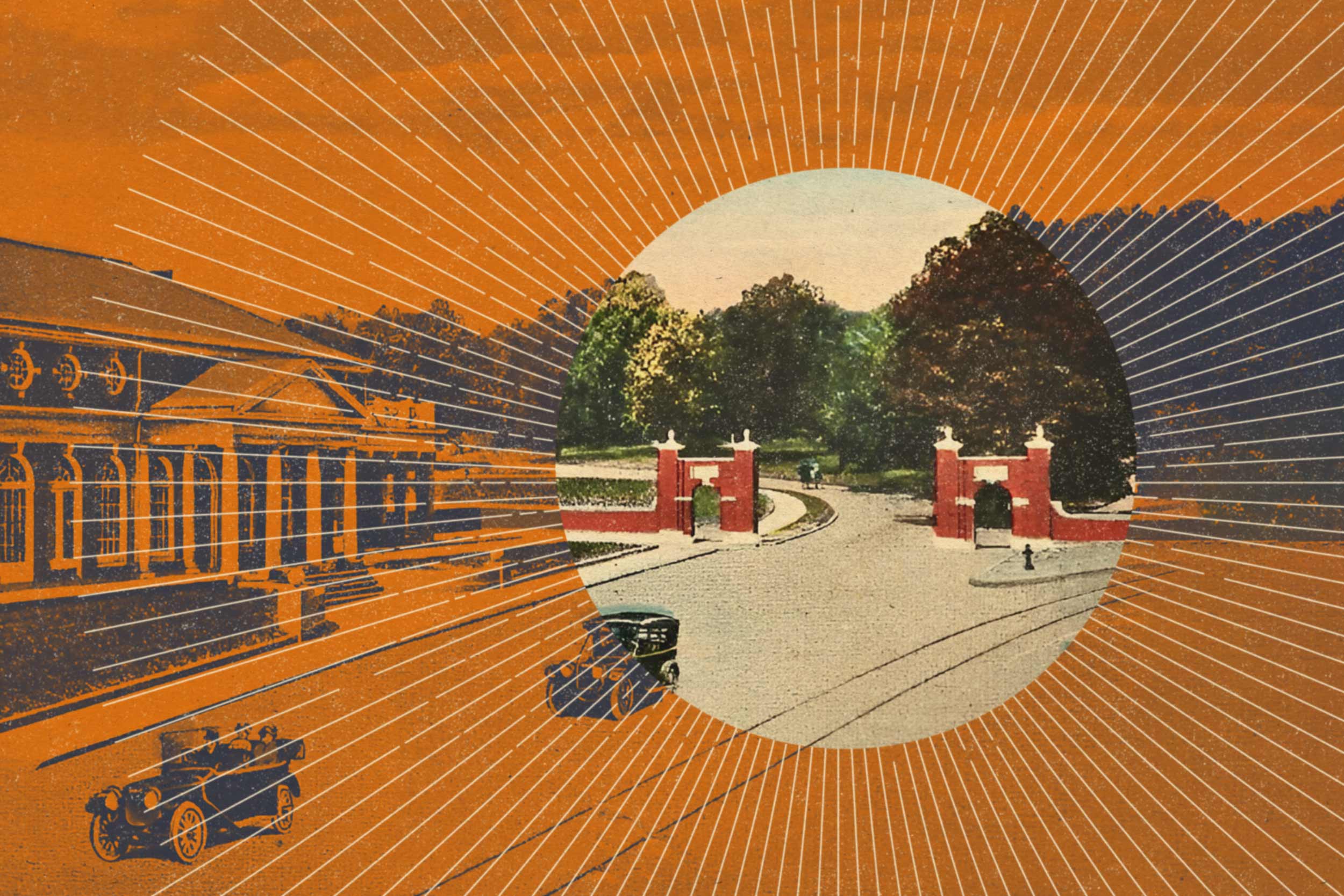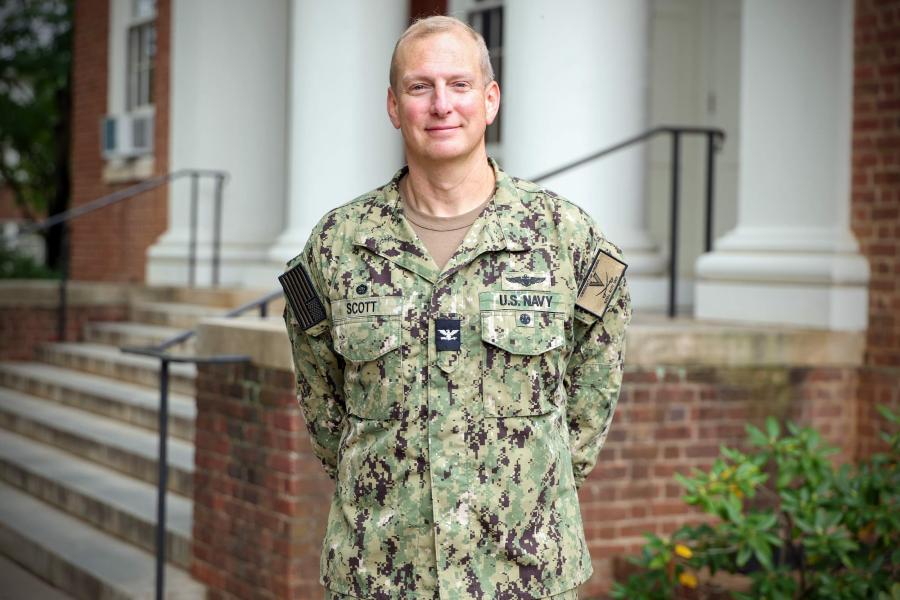The University of Virginia’s new Chain Gate is like the old one, but without the chain.
Facilities Management workers restored the Chain Gate pillars on Ruppel Drive, flanking the University’s entrance from Jefferson Park Avenue, as part of the McIntire School of Commerce’s Cobb and Shumway halls building project. The new pillars, which have a concrete block core and brick exterior, were moved from their original positions and rebuilt, from the footings up, to look like the originals.

An ornamental element of one of the gate pillars waits to be lifted into place on the new pillars at the Chain Gate. (Photo by Matt Riley, University Communications)
“They should be almost identical, less the settling cracks and dirt and grime from decades of weathering,” said Craig Hilten, senior project manager in capital construction and renovations for UVA Facilities Management. The original gates had a chain to block through traffic on Hospital Drive, which then stretched from Jefferson Park Avenue to University Avenue.
Hospital Drive is no longer a through street and ends in a turnaround in front of Varsity Hall, which was relocated in 2005 to make way for the Robertson Hall addition to Rouss Hall at the McIntire School. The University renamed the remaining short portion of Hospital Drive running from the other side of Varsity Hall to Jefferson Park Avenue as “Ruppel Drive” in honor of the late Andrew Charles Ruppel, who taught management of information technology at McIntire for 38 years before his death in 2010.
The reconstructed pillars remain at the same point on the road, but with more distance between them.











